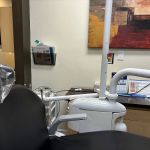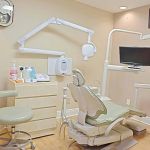- 1-Understanding-gum-disease
- 2-Toothbrushing-basics-for-gum-health
- 3-Electric-toothbrush-vs-manual-for-gum-disease
- 4-Clinical-evidence-supporting-electric-toothbrushes
- 5-Additional-benefits-of-electric-toothbrushes
- 6-User-experience-and-practical-tips
- 7-When-to-consult-a-dental-professional
- 8-Recommendations-from-dentistry-toothtruth
1. Understanding Gum Disease and Its Impact
Gum disease, or periodontal disease, is a common yet serious condition affecting the tissues surrounding and supporting the teeth. It begins with inflammation of the gums caused by bacterial plaque buildup and can progress to more severe stages resulting in tooth loss and systemic health issues if untreated.
Maintaining excellent oral hygiene is the first line of defense against gum disease. Proper brushing techniques, combined with flossing and regular dental check-ups, help control plaque and prevent the onset or progression of gum problems.
2. Toothbrushing Basics for Maintaining Healthy Gums
Effective toothbrushing removes plaque and food debris, reducing bacteria that irritate the gums. The American Dental Association recommends brushing twice daily for two minutes each time using a soft-bristled brush and gentle circular motions.
However, not all toothbrushes are created equal when it comes to managing gum disease. This brings us to the question: is electric toothbrush better for gum disease?
3. Electric Toothbrush vs. Manual Toothbrush: Which is Better for Gum Disease?
Electric toothbrushes offer several advantages over manual toothbrushes for those dealing with gum disease. Their oscillating or sonic technology provides more consistent and thorough plaque removal, especially along the gumline, where bacteria tend to accumulate.
Manual brushing relies heavily on user technique and effort, which can be inconsistent. In contrast, electric toothbrushes help standardize brushing motions and encourage better coverage, reducing the risk of gum inflammation and bleeding.
4. Clinical Evidence Supporting Electric Toothbrushes for Gum Health
Numerous studies have shown that electric toothbrushes, particularly oscillating-rotating models, significantly reduce plaque and gingivitis more effectively than manual brushes. For example, a systematic review published in the Journal of Clinical Periodontology found electric toothbrush users had a 21% greater reduction in plaque and a 11% greater reduction in gingivitis after three months.
These improvements are especially important for individuals with early signs of gum disease or those at high risk due to factors such as smoking or diabetes.
5. Additional Benefits of Using an Electric Toothbrush
Beyond improved plaque control, electric toothbrushes often feature built-in timers to ensure adequate brushing time, pressure sensors to prevent aggressive brushing that can damage gums, and ergonomic designs that improve comfort and accessibility. These features collectively contribute to better gum health maintenance.
6. User Experience and Practical Tips for Maximizing Benefits
Many users report that switching to an electric toothbrush improved their motivation to brush regularly and thoroughly. However, it’s important to complement brushing with flossing and professional cleanings.
For best results, replace brush heads every three months and use toothpaste recommended for sensitive or gingivitis-prone gums. Gentle, consistent use is key—avoid pressing too hard, as electric toothbrushes are designed to do the work for you.
7. When to Consult a Dental Professional
If you notice persistent gum bleeding, swelling, or discomfort despite proper oral hygiene, seek advice from a dental professional promptly. Early intervention can prevent progression to advanced gum disease, which requires more intensive treatments.
Dental experts can provide personalized recommendations and professional cleanings that enhance the effectiveness of your at-home care.
8. Recommendations from Dentistry Toothtruth
At Dentistry Toothtruth, we recommend electric toothbrushes as a valuable tool in the fight against gum disease. Combined with regular dental visits and good oral hygiene practices, they can make a significant difference in gum health.
Visit our website to explore the best electric toothbrush models, detailed usage guides, and other oral care products tailored to support your journey toward healthier gums.







 Affordable Dental at Eastern & Windmill4.0 (287 review)
Affordable Dental at Eastern & Windmill4.0 (287 review) Dr. Hecklin: Family & Cosmetic Dentistry5.0 (316 review)
Dr. Hecklin: Family & Cosmetic Dentistry5.0 (316 review) Dr. Alison Seliger-Schamberg, DMD0.0 (0 review)
Dr. Alison Seliger-Schamberg, DMD0.0 (0 review) Coastal Dental Group4.0 (183 review)
Coastal Dental Group4.0 (183 review) Ridgewood Valley Pediatric Dentistry4.0 (97 review)
Ridgewood Valley Pediatric Dentistry4.0 (97 review) Lone Mountain Dental Las Vegas4.0 (538 review)
Lone Mountain Dental Las Vegas4.0 (538 review) The Importance of Oral Health Education During Pregnancy for a Healthy Pregnancy
The Importance of Oral Health Education During Pregnancy for a Healthy Pregnancy Best Tips for Brushing Your Teeth Properly for Healthy Gums: Essential Techniques for Oral Health
Best Tips for Brushing Your Teeth Properly for Healthy Gums: Essential Techniques for Oral Health Why Skipping Dental Checkups Can Lead to Bigger Oral Health Problems
Why Skipping Dental Checkups Can Lead to Bigger Oral Health Problems Advantages of Porcelain Dental Restorations
Advantages of Porcelain Dental Restorations How Can Diabetes Cause Tooth and Gum Problems? Preventing and Managing Oral Health Issues
How Can Diabetes Cause Tooth and Gum Problems? Preventing and Managing Oral Health Issues Healthy Habits for Promoting Good Oral Health and Hygiene: Tips for a Healthy Smile
Healthy Habits for Promoting Good Oral Health and Hygiene: Tips for a Healthy Smile